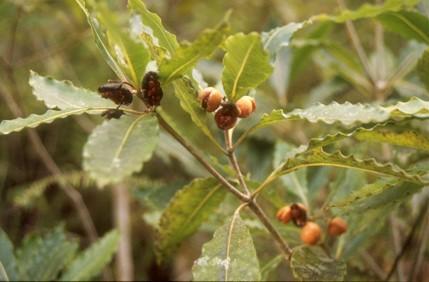Two effects of global climate change are combining to threaten a global biodiversity hotspot according to new evidence published in Ecography (30/5/22 ).
Global warming is increasing the intensity of the strongest Atlantic hurricanes. At the same time, it is slowly shifting the range of plant and animal species into previously colder zones: towards the north and south poles and up the slopes of mountains to higher altitudes. Long-term research in the Blue Mountains of Jamaica by a team from University of Cambridge, UK, Manaaki Whenua/Landcare Research, New Zealand, University of Miami, USA and Professor John Healey at Bangor University has now shown that this migration was accelerated by the severe impact of Hurricane Gilbert in 1988.
Gilbert caused serious damage to the Blue Mountain forests, snapping the branches and trunks of many of the biggest trees. Most resprouted and survived, but the rate of mortality was particularly high for the species that are restricted to the highest altitude forests. The gaps in the forest canopy opened up by the death of these trees provided the opportunity for new trees to regenerate, but these tended to be species from lower down the mountain slopes. The net result is that the forest is becoming more dominated by lower altitude species, accelerating the process that was already slowly under way due to global warming.
John Healey, Professor of Forest Sciences at Bangor University, explains,
“The Jamaican Blue Mountains rise to an altitude of 2256 m so, at present, there is still forested land further up the slopes for the rare mountain species to migrate to. However, with this process continuing as the atmosphere warms still further, once they become confined to the highest mountain ridges there will be nowhere else for these species to go. The impact of increasingly severe hurricanes, like Gilbert, will bring that threat of extinction ever sooner.”
“This has the potential to be a major contributor to the global biodiversity crisis, showing yet again how it is inextricably linked to the climate crisis. Gilbert was one of the most destructive hurricanes to hit Jamaica in the last century, but there is strong modelling evidence that we will see an increasing number of such intense cyclones across the Caribbean as a result of climate change. The Caribbean islands are a global biodiversity hotspot and their mountain forests are a particularly important habitat for many endangered species. A high proportion of the species native to the upper slopes of the Blue Mountains are found no-where else on earth. Some others also exist on a few other Caribbean mountains, but there they will be equally threatened by this process.”

This important threat to global biodiversity is made even more serious by yet another human impact; invasion of forests by species introduced from other parts of the world. The Australian tree Pittosporum undulatum (known locally as “mock orange” because of its brightly coloured fruit) was introduced to a Botanic Garden in the Blue Mountains more than 130 years ago. It has become one of the world’s most invasive species. Its seeds are dispersed far and wide by native Jamaican birds. The gaps in the canopy of the natural forests across the Blue Mountains caused by Hurricane Gilbert allowed a huge expansion of its invasion. Pittosporum casts a dense shade and the same research group’s previous research has shown that it outcompetes many of the native tree species, particularly threatening the endemic high altitude species that we now know are also the most vulnerable to global warming.
John Healey concludes,
“Taken together this evidence shows another strong reason for recognising climate change as a threat to global biodiversity, but addressing that is clearly a long and difficult challenge. There are, however, more immediate steps that we can take to reduce the risk of extinction of species in this biodiversity hotspot by much better regulation of the movement between countries of species with any potential to become invasive and by concerted action to control invasive species populations where they have already started to threaten biodiverse natural habitats. Protecting the remaining high altitude forests from deforestation and degradation will also buy us more time, but unless we can effectively solve this combination of threats conservation of endangered species in these mountain forests will fail and we will be reduced to trying to preserve them outside their native habitats in botanic gardens or seed banks.”



